Hexes Part 1: A Brief History
Let’s go over a brief history of hexes in wargames and then I’ll delve into practical application and how I’ll apply it in my design in a follow-up post. Much of this is common knowledge among wargamers, and this is by no means meant to be an extensive history. Instead this is meant to serve as a high-level overview of the use of hexes in modern wargaming maps. Still, if I’ve made any mistakes in my research send me a note to tell me about it.
The first successful, commercially-printed modern board wargame1, Tactics, was designed by Charles S. Roberts, who many know as the founder of Avalon Hill Game Company. Published in 1954, Tactics (and later Tactics II) was unique in that it was a self-contained experience. Unlike other wargame products of the day, players weren’t required to buy miniatures or to assemble a large map. Everything you needed to play came in the box just like mainstream board games. Despite not being a huge commercial success at the time, many of the pioneering mechanics in Tactics are still staples of wargaming today: combat odds ratios, combat results tables (a.k.a. CRT), variable unit movement, and variable terrain. Like many non-war board games, Tactics used squares as “spaces.” For wargamers to get hexes for the first time, they’d have to wait for another Charles S. Roberts game.
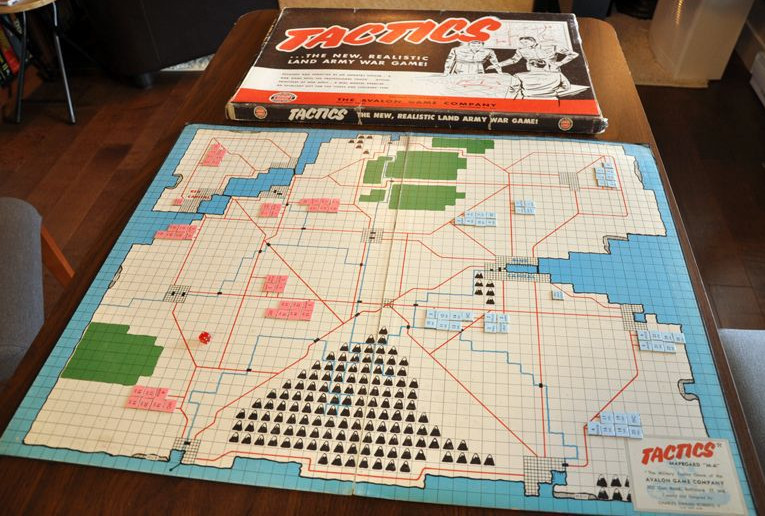
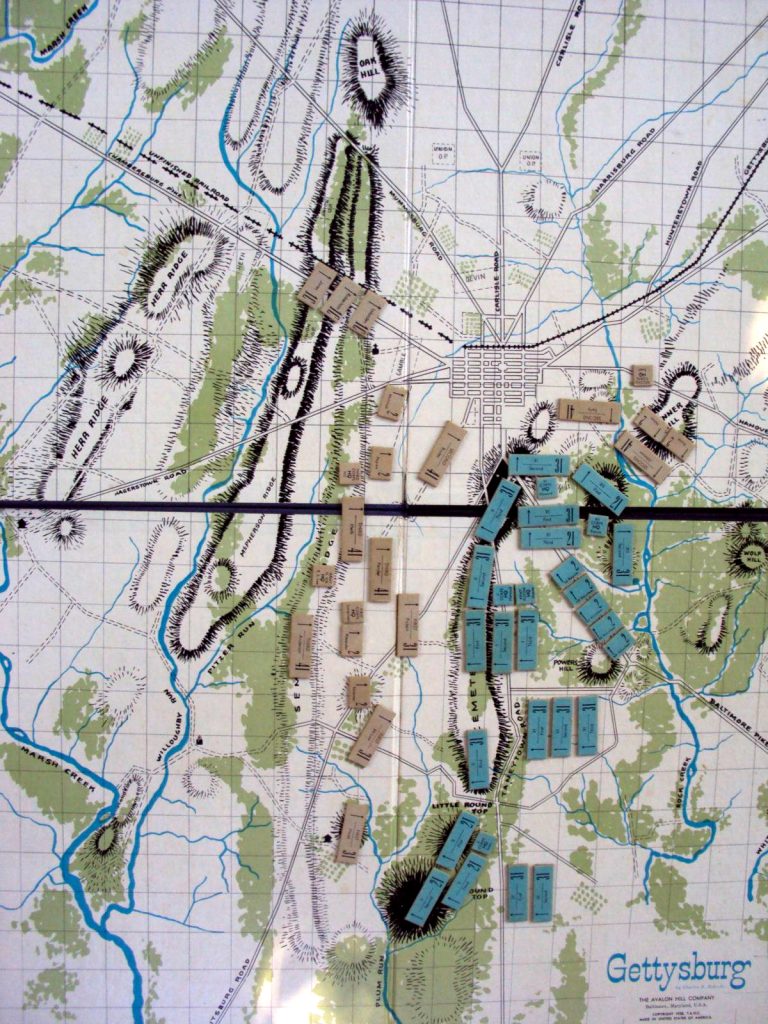
In 1958, Roberts and his company, Avalon Hill, released Gettysburg. A game that used similar mechanics to Tactics but also introduced using unit orientation as a combat factor. A player could improve their odds by attacking from the side or rear of an enemy.
Roberts began having discussions with RAND Corporation, a company that was doing research and analysis for the United States Armed Forces. RAND employed John Nash, who had designed a non-war hex-based game called Hex. It was a similar game to one that mathematician Piet Hein had designed in 1942, so some consider Hein the father of all hex-based games. Nash is probably best known as the subject of the movie A Beautiful Mind and for winning a Nobel Prize.
The folks at RAND had taken an interest in Roberts’ games because they had come up with tables similar to his odds ratios and CRTs in creating their own conflict simulations. Likewise, Roberts saw something in RAND’s work that was of interest to him: they were using hexagonal grids in their systems, not squares. He saw the possibilities and immediately adopted hexagons, or “hexes” as they’re more commonly called, for his own designs. He revised Gettysburg and in 1961, the centennial of The Civil War, Avalon Hill released a new version that used a hexagonal grid, and the rest as they say (especially in wargaming) is history.
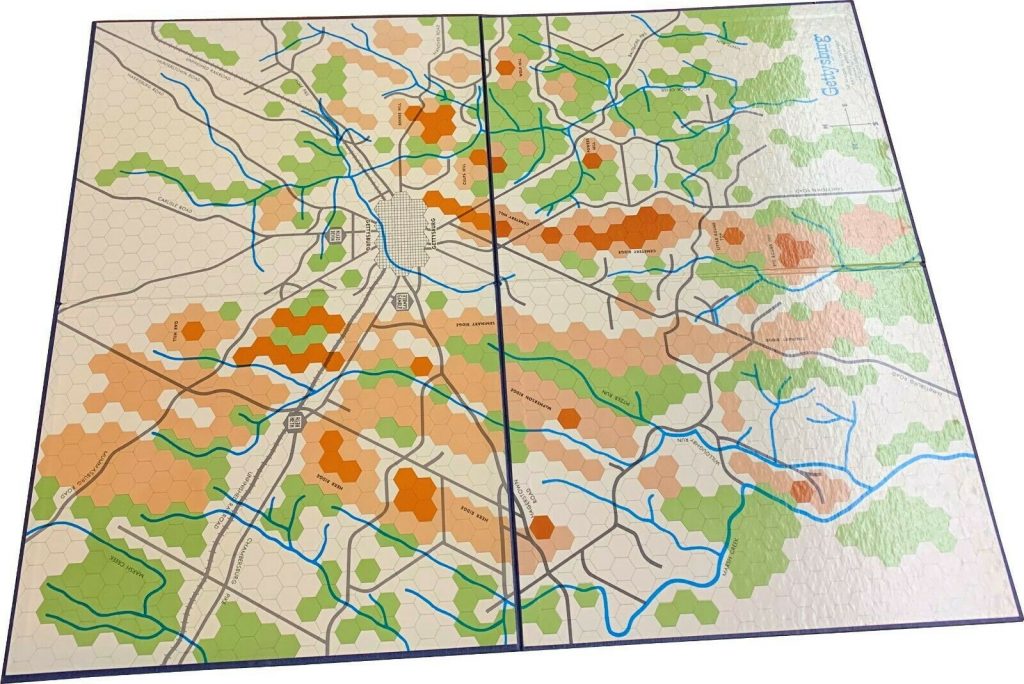
A Little Bit of Math
Consider that in a square grid there are eight possible adjacent directions from any square (counting diagonals), but there are only six from a hexagonal grid. With fewer directional options, it initially looks like squares would be the superior choice. But for game designers, especially coming from games involving miniatures where players measure for unit, the hex allows for equidistant movement in all of its six directions. Take a look at the following illustration:
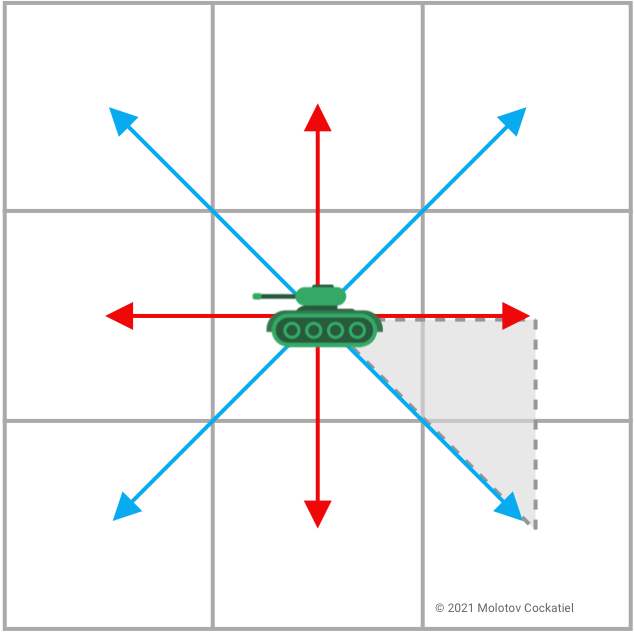
While the tank can move into any of the surrounding squares, notice that the distance along the diagonals are longer. This line is the hypotenuse of a right triangle that we learned about in Geometry class. The good ol’ Pythagorean theorem tells us that a hypotenuse of a right triangle is longer than either of its other two sides. In this case where the triangles are equilateral, the relationship is 1 to 1.41421356. In other words, if an orthogonal distance (red line) in a square grid is 1 mile, the diagonal distance (blue line) is 1.41421356 miles.
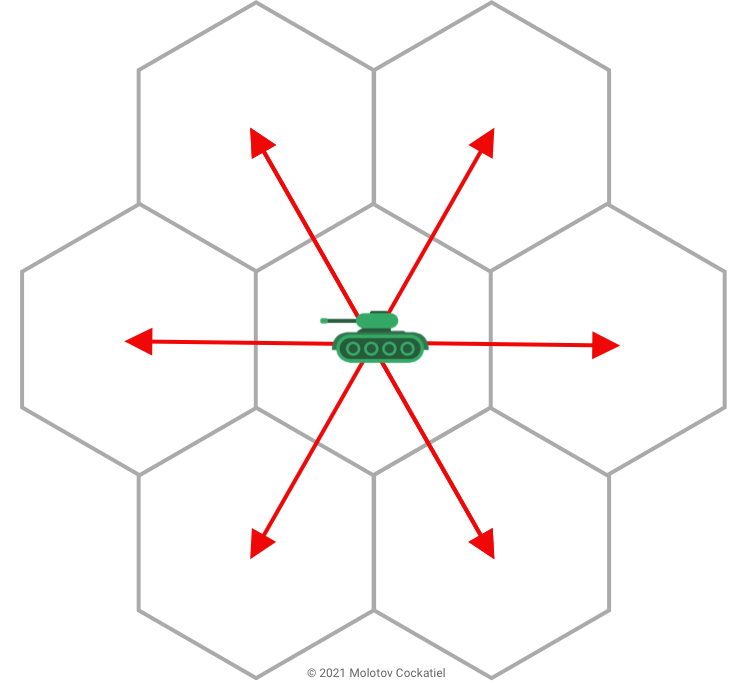
Now look at the same tank on the hexagonal grid pictured. All of those distances are the same. To a miniatures gamer or someone doing conflict research for the government, this is a lot more satisfying.
If you’re like me, you might be asking at this point, “Well what about other shapes?” Interestingly, to make a grid that has no gaps where the corners and vertices are all identical and all the adjacent edges are at the same angle isn’t as common as you might think. In fact there are only three shapes that can do this: the equilateral triangle, the square, and the regular hexagon. These grids are called tessellations and you can read more about them here.
The purpose of this post was to get some background on the ubiquitous hex grid we see on so many of our favorite wargames. I think it’s important to understand why I’m doing something, even in a case like this where I’m sticking to a classic formula. In the next part, I’ll cover some of the more practical hex stuff and how it pertains to the digital hex-and-counter game I’m building. Thanks for reading and check back for Hexes: Part 2 coming soon!
1 Drawing a distinction here to the printed modern board wargame as we know it today. You can trace wargaming more generally back to Kriegsspiel and, more arguably, chess.

Leave a Reply